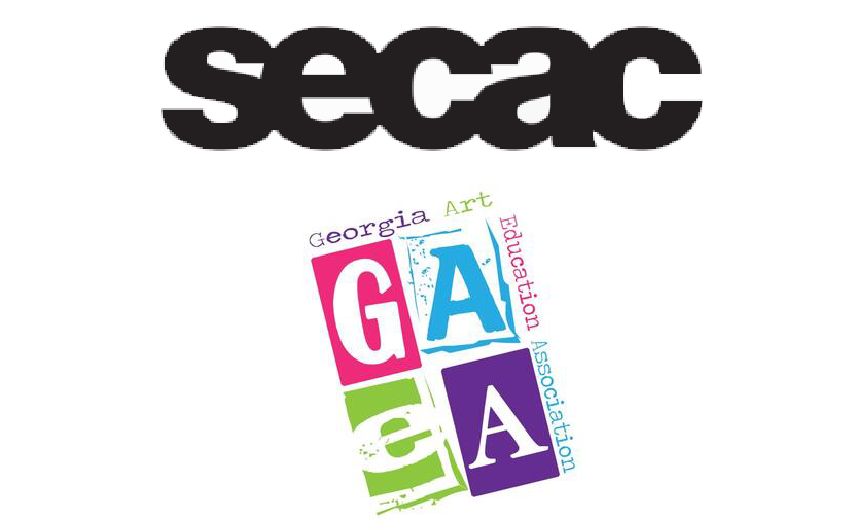DEFINE YOUR PATH IN THE ARTS
Our faculty strive to foster collaborative learning and encourage development in both art theory and artistic practice. With four different concentrations, our students prepare for further study at the graduate level, and the demands for a workforce requiring exceptional, creative problem solving skills. Our Visiting Artist series, as well as the regular exhibitions of renowned artists in our various galleries, expose students to current trends in regional, national, and international art.
Our Concentrations
Art History and Visual Culture
The Art History and Visual Culture concentration provides an opportunity to develop an understanding of the history, theory, and visual culture of art from prehistory to the present day. The concentration offers a wide variety of courses, including courses about the art of ancient Egypt, African art, medieval relics and reliquaries, Italian and Northern Renaissance art, Baroque art in Europe, Art Since 1950, Latin American art and film, art theory, and the visual culture of gender, race, and ethnicity.
The Art History and Visual Culture concentration culminates in a one-semester Senior Capstone experience. Capstone students work directly with a professor to research and develop a selected topic that culminates with a written paper and a public presentation.
Fine Art Studio
The Fine Art Studio concentration track provides an opportunity within the liberal arts framework for students to develop skills, experiential practice and multicultural understanding of studio arts with a fine arts focus. A wide variety of courses are offered including basic art skills such as Drawing and Two-Dimensional Design, traditional art history surveys and upper-level Studio Art courses in Ceramics, Graphic Design, Painting, Photography, and Printmaking.
The Bachelor of Arts in Fine Art concentration track culminates in an interdisciplinary yearlong Senior Capstone experience. The first semester of the senior year involves working closely with a professor and members of the Art Faculty to research and develop skills and ideas for a Senior Thesis Exhibition. The second semester of the senior year is focused on creating a body of original artwork and mounting a Senior Thesis Exhibition for public presentation.
Graphic Design
The Graphic Design concentration provides a learning environment that nurtures creative thinking and skill development. The curriculum is carefully assembled to fulfill the growing interest in graphic design from students in the Department of Art and beyond. Courses are designed to help students acquire the applicable skills and knowledge of design principles to gain professional proficiency in every aspect of the graphic design profession. The concentration will also prepare students for further study at the graduate level and to meet the demands of the workforce.
A wide variety of courses are offered including Intro to the Computer in Art, Graphic Design Studio from beginning to advanced level, Typography, Publication Design, Corporate Identity, Packaging, Motion, Senior Capstone experience that focuses primarily on research, design ideation and portfolio development, and Special Topics in Design. The topic will vary from section to section and may include high-end security printing, environmental design, web design, motion design, wayfinding design, and exhibition design, among others.
Museum Studies
The Museum Studies concentration is a Bachelor of Arts degree program offered in the Department of Art. It is one of only a few undergraduate programs of this emerging field offered in the United States.
Students in this program learn and understand the internal operations of a museum organization. The courses include Introduction to Museums Studies, which explores the history and function of museums, their missions, diverse collections, exhibition programming, and interaction with audiences and communities. In Exhibition Design, presents museum and gallery design principles and exhibition construction techniques. Critical and Curatorial Theory & Development focuses on curatorial practices for the development of exhibitions and collections in a museum environment. Museum Administration focuses on the organizational structure of museums.
Key Benefits of this Degree
-
Our program enhances the strengths of each student with emphasis on building a broad foundation in the arts, visual communication, creative expression, and analytical thinking.
-
We offer opportunities to create individual projects, collaborate with peers, participate in the Creative Arts Alliance student group, complete internships, curate exhibitions, study abroad with our faculty, and engage in community-based learning.
-
The Visiting Artists and Scholars program attracts top artists, curators, and art historians who engage with our students through lectures, workshops, and one-on-one critiques.
-
Our unique capstone experience culminates with a faculty-mentored formal exhibition of creative endeavors or scholarly research.
What can my career look like with this degree?

Artistic Alumna opens Tattoo Studio in Milledgeville
Antionette Reames, ’12, discovered her zeal for art when she was seven, after an Orlando city bus encounter with a young rider who held a sketch book. In 2021, she became the first Black woman to open a tattoo studio in Milledgeville.
Career Paths for Art Majors
- Art Historian
- Studio Artist
- Art Educator
- Graphic Designer
- Photographer
- Community Outreach Coordinator
- Curator
- Museum Technician
- Artist’s Assistant
- Research Assistant
- Gallery Coordinator
- Teaching K-12
ADDITIONAL CAREER INFORMATION
Learn more about careers available to art majors.
The Department of Art is a member of SECAC and the Georgia Art Education Association.
